 Methodist Healthcare announced that all of its hospitals have been recognized as 2013 Top Performers on Key Quality Measures® by The Joint Commission, the leading accreditor of health care organizations in the United States. Methodist Hospital and its campuses at Methodist Children’s Hospital, Methodist Heart Hospital, Methodist Specialty and Transplant Hospital, Methodist Texsan Hospital, Metropolitan Methodist Hospital and Northeast Methodist Hospital* plus Methodist Stone Oak Hospital and Methodist Ambulatory Surgery Hospital were recognized as part of The Joint Commission’s 2014 annual report, “America’s Hospitals: Improving Quality and Safety,” for attaining and sustaining excellence in accountability measure performance for heart attack, heart failure, pneumonia, surgical care, and children’s asthma. Methodist Healthcare is the only hospital system in San Antonio to receive this Top Performer status.
Methodist Healthcare announced that all of its hospitals have been recognized as 2013 Top Performers on Key Quality Measures® by The Joint Commission, the leading accreditor of health care organizations in the United States. Methodist Hospital and its campuses at Methodist Children’s Hospital, Methodist Heart Hospital, Methodist Specialty and Transplant Hospital, Methodist Texsan Hospital, Metropolitan Methodist Hospital and Northeast Methodist Hospital* plus Methodist Stone Oak Hospital and Methodist Ambulatory Surgery Hospital were recognized as part of The Joint Commission’s 2014 annual report, “America’s Hospitals: Improving Quality and Safety,” for attaining and sustaining excellence in accountability measure performance for heart attack, heart failure, pneumonia, surgical care, and children’s asthma. Methodist Healthcare is the only hospital system in San Antonio to receive this Top Performer status.
The Top Performer program recognizes hospitals for improving performance on evidence-based interventions that increase the chances of healthy outcomes for patients with certain conditions, including heart attack, heart failure, pneumonia, surgical care, children’s asthma, stroke, venous thromboembolism and perinatal care, as well as for inpatient psychiatric services and immunizations.
Three out of the last four years Methodist Hospital’s campuses have been recognized as Top Performers. Methodist Stone Oak Hospital and Methodist Ambulatory Surgery Hospital were recognized two out of the last four years.
To be a 2013 Top Performer, hospitals had to meet three performance criteria based on 2013 accountability measure data, including:
- Achieving cumulative performance of 95 percent or above across all reported accountability measures;
- Achieving performance of 95 percent or above on each and every reported accountability measure where there were at least 30 denominator cases; and
- Having at least one core measure set that had a composite rate of 95 percent or above, and (within that measure set) all applicable individual accountability measures had a performance rate of 95 percent or above.
“Delivering the right treatment in the right way at the right time is a cornerstone of high-quality health care. I commend the efforts of Methodist Healthcare for their excellent performance on the use of evidence-based interventions,” said Mark R. Chassin, M.D., FACP, M.P.P., M.P.H., president and CEO, The Joint Commission.
“We understand what matters most to patients at Methodist Healthcare is the quality and safety of the care they receive. That is why we have made it a top priority to improve positive patient outcomes through evidence-based care processes,” said Jaime Wesolowski, president and CEO for Methodist Healthcare. “Methodist Healthcare is proud to be named a Top Performer as it recognizes the knowledge, teamwork and dedication of our entire hospital staff,” he continued.
For more information about the Top Performer program, visit http://www.jointcommission.org/accreditation/top_performers.aspx.
*These hospitals share the same Centers for Medicare & Medicaid Services (CMS) provider number with Methodist Hospital and therefore are evaluated as a single entity by The Joint Commission; Methodist Stone Oak Hospital and Methodist Ambulatory Surgery Center, each has its own provider number.
About Methodist Healthcare
Methodist Healthcare System of San Antonio (MHS) began as Methodist Hospital, chartered in 1955 by the United Methodist Church. Since that time, MHS has grown to what is now the largest health care provider in South and Central Texas with 27 facilities, including nine acute care hospitals serving over 90,000 inpatients and 390,000 outpatients annually, expanding its vision of world class health care to San Antonio and 26 surrounding counties.
The System’s ownership structure is a 50/50 co-ownership between not-for-profit Methodist Healthcare Ministries (MHM) and for-profit Hospital Corporation of America (HCA). With equal partnership control, MHS assures a dynamic balance in its mission: serving humanity to honor God by providing exceptional and cost-effective healthcare accessible to all.
Led by a culture of Methodist Excellence, the over 8,000 staff and volunteers combined with a medical staff of over 2,500, dedicate themselves to continuous quality improvement by committing to live by Methodist Excellence mission, vision and values.
Methodist Healthcare has achieved many awards for clinical excellence and quality outcomes as well innovation and people’s choice awards. Receiving the Texas Award for Performance Excellence in 2014 is a testament to Methodist Healthcare being selected as the most preferred and trusted health care system each and every year.

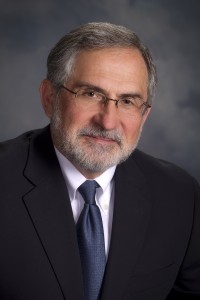 Steve Jones, CHCM, Senior Vice President and COO of Raba Kistner Environmental, has announced that Raba Kistner has hired Steve A. Tomka, Ph.D. to develop and manage Cultural Resources projects for the firm. As the Senior Archaeologist, Dr. Tomka is working closely with Prehistoric and Historic Project Archaeologists and Field and Laboratory Technicians at Raba Kistner Environmental on several new and exciting projects in the San Antonio area and around Texas.
Steve Jones, CHCM, Senior Vice President and COO of Raba Kistner Environmental, has announced that Raba Kistner has hired Steve A. Tomka, Ph.D. to develop and manage Cultural Resources projects for the firm. As the Senior Archaeologist, Dr. Tomka is working closely with Prehistoric and Historic Project Archaeologists and Field and Laboratory Technicians at Raba Kistner Environmental on several new and exciting projects in the San Antonio area and around Texas. The Spurs didn’t get to winning championship status in a day. So what is it that makes their team so special and what does this have to do with small business? If you want to learn the same principles that make the Spurs such a unique team and apply it to your small business, keep reading!
The Spurs didn’t get to winning championship status in a day. So what is it that makes their team so special and what does this have to do with small business? If you want to learn the same principles that make the Spurs such a unique team and apply it to your small business, keep reading!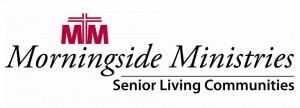 The imminent tidal wave of baby boomers is here. The oldest baby boomers have already turned 65, and the older population of the U.S. is beginning to swell. The age-65-and-older population grew 18 percent between 2000 and 2011 to 41.4 million senior citizens, according to a recent Administration on Aging report. These numbers are expected to further balloon over the coming decade as baby boomers continue to reach traditional retirement age. So, how will we care for these seemingly unfathomable numbers of older adults? One of the answers to how to care for our seniors as they age is in the empowerment of caregivers through technology.
The imminent tidal wave of baby boomers is here. The oldest baby boomers have already turned 65, and the older population of the U.S. is beginning to swell. The age-65-and-older population grew 18 percent between 2000 and 2011 to 41.4 million senior citizens, according to a recent Administration on Aging report. These numbers are expected to further balloon over the coming decade as baby boomers continue to reach traditional retirement age. So, how will we care for these seemingly unfathomable numbers of older adults? One of the answers to how to care for our seniors as they age is in the empowerment of caregivers through technology.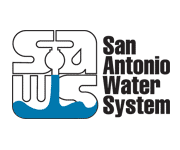 By Mark A. Peterson
By Mark A. Peterson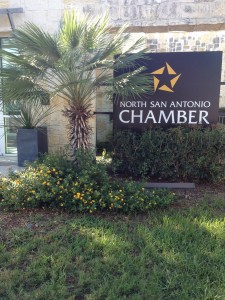 In June 2011, the North SA Chamber participated in the Commercial Irrigation Design Rebate program. Together with SAWS staff, Chamber personnel determined that capping one zone and converting six zones to multi-stream rotating heads would reduce water consumption considerably.
In June 2011, the North SA Chamber participated in the Commercial Irrigation Design Rebate program. Together with SAWS staff, Chamber personnel determined that capping one zone and converting six zones to multi-stream rotating heads would reduce water consumption considerably.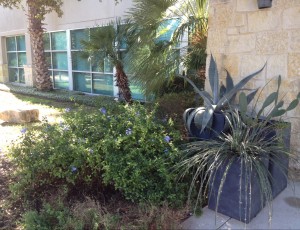 In 2010, their annual consumption was about 350,000 gallons — or an average of 29,000 gallons of water per month. After the retrofits were completed in June 2011, consumption per month dropped to 16,830 gallons over 12 months. Comparing 2010 to 2012, consumption was reduced by 69 percent.
In 2010, their annual consumption was about 350,000 gallons — or an average of 29,000 gallons of water per month. After the retrofits were completed in June 2011, consumption per month dropped to 16,830 gallons over 12 months. Comparing 2010 to 2012, consumption was reduced by 69 percent.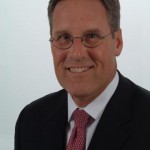
 By Ken Malcolmson
By Ken Malcolmson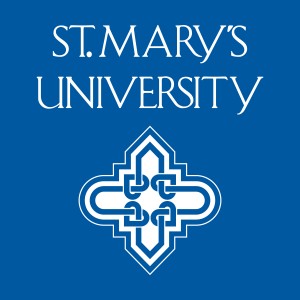
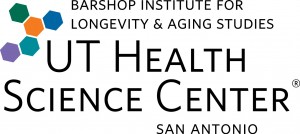 New director says a top priority is translation of discoveries to patient care
New director says a top priority is translation of discoveries to patient care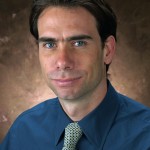 Nicolas Musi, M.D., a physician-scientist in the School of Medicine at
Nicolas Musi, M.D., a physician-scientist in the School of Medicine at  Capital Group, one of the world’s largest investment firms with more than $1 trillion in assets under management, helps millions of people around the world invest through pensions and retirement plan accounts.
Capital Group, one of the world’s largest investment firms with more than $1 trillion in assets under management, helps millions of people around the world invest through pensions and retirement plan accounts. Whether they are starting a new business, expanding an existing one or simply need additional working capital, many business owners are utilizing credit to grow their businesses. There are many ways to structure financing, but one option that has grown in popularity in recent years is SBA lending.
Whether they are starting a new business, expanding an existing one or simply need additional working capital, many business owners are utilizing credit to grow their businesses. There are many ways to structure financing, but one option that has grown in popularity in recent years is SBA lending.